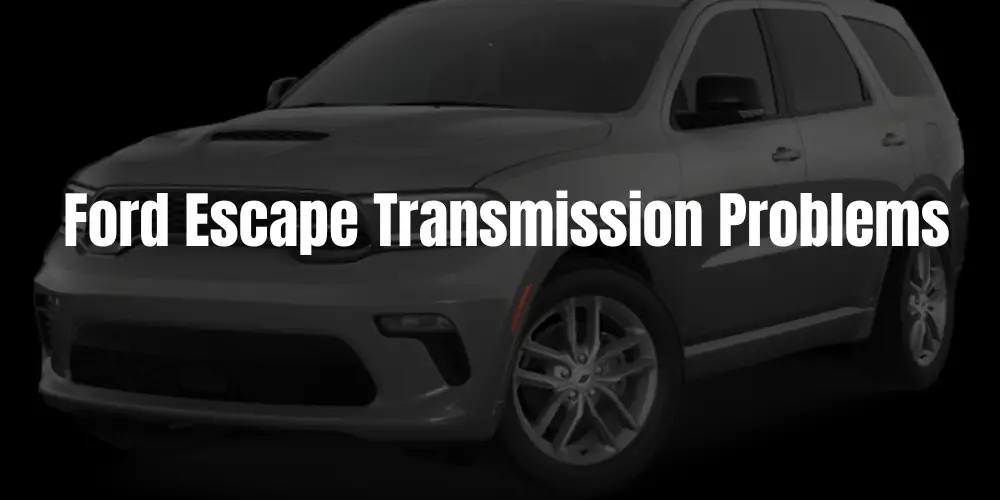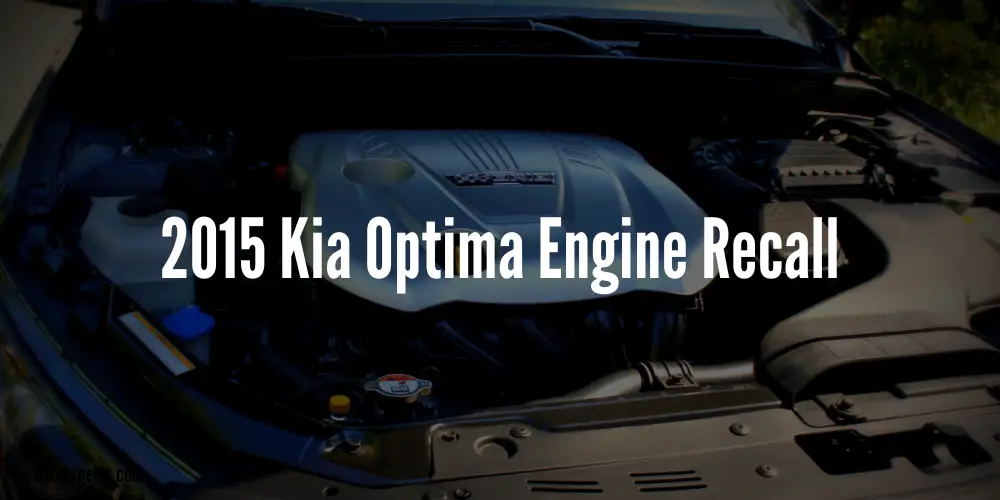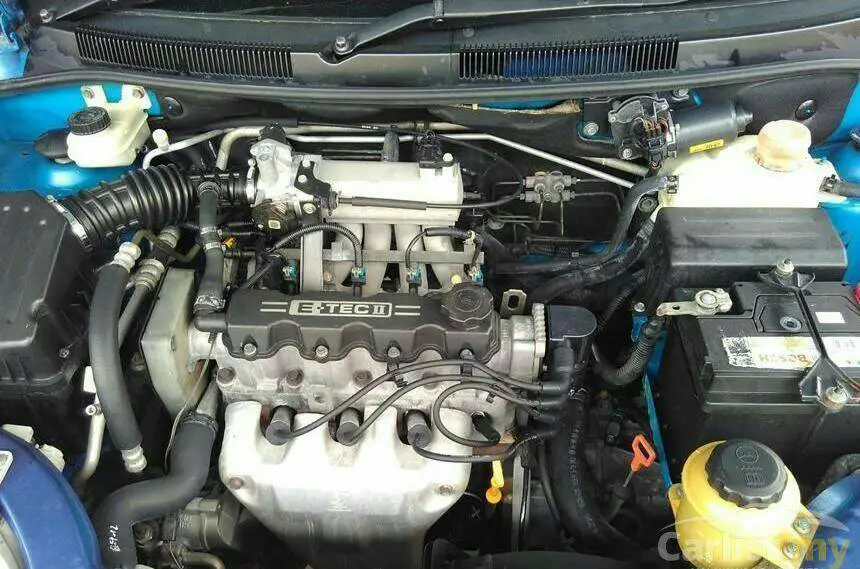If you are looking for a reliable, fuel-efficient, and fun SUV, you might have considered buying a Ford Escape.
This popular vehicle has been on the market for two decades and has sold millions of units.
But before you make your decision, you need to read this article.
You will learn about the Ford Escape transmission problems that have plagued many owners and how to avoid them.
Ford Escape transmission problems can range from minor sensor errors to complete transmission failures that can leave you stranded on the road.
They can also cost you a lot of money and time to repair. In this article, you will find out which model years of the Ford Escape are the most and least prone to transmission problems, what are the signs and causes of these problems, and how to fix them or prevent them from happening.
You will also get some tips on how to buy a used Ford Escape without getting a lemon.
By the end of this article, you will have a better understanding of the Ford Escape transmission problems and how to deal with them.
This will help you make an informed decision and enjoy your Ford Escape for years to come.
How Do I Know If My Ford Transmission Is Bad?
Here are some common signs and symptoms that you should look out for:
-
Rough shifting
If your Ford Escape jerks, hesitates, or makes a clunking sound when shifting gears, it could indicate a problem with the transmission. This could be caused by low or dirty transmission fluid, worn or damaged transmission parts, or a faulty transmission control module (TCM).
-
Delayed acceleration
If your Ford Escape takes longer than usual to accelerate or does not respond to your gas pedal, it could indicate a problem with the transmission. This could be caused by low or dirty transmission fluid, clogged or leaking transmission filters, or faulty transmission solenoids.
-
Fluid leaks
If you notice a red or brown fluid under your Ford Escape, it could indicate a transmission fluid leak. This could be caused by a cracked or loose transmission pan, a damaged or worn transmission seal, or a faulty transmission cooler line.
-
Warning lights
If your Ford Escape displays a check engine light, a transmission overheat light, or a wrench light, it could indicate a problem with the transmission. This could be caused by a malfunctioning sensor, a faulty TCM, or an overheated transmission.
-
Strange noises
If your Ford Escape makes a whining, grinding, humming, or buzzing sound, it could indicate a problem with the transmission. This could be caused by low or dirty transmission fluid, worn or damaged transmission parts, or a failing transmission pump.
What Are The Ford Escape Transmission Problems?
-
Rough or delayed shifting
This problem occurs when the transmission does not shift smoothly or quickly between gears, resulting in jerky or sluggish acceleration. This can be caused by low transmission fluid levels, a failing shift solenoid, or worn-out transmission oil filters.
A shift solenoid is an electronic device that controls the flow of fluid in the transmission and helps to change gears. If it malfunctions, it can cause erratic or delayed shifting. A transmission oil filter is a component that filters out dirt and debris from the fluid and prevents it from damaging the transmission.
If it gets clogged or damaged, it can reduce the fluid pressure and affect the shifting performance.
-
Transmission failure or loss of power
This problem occurs when the transmission stops working completely or loses the ability to transfer power from the engine to the wheels.
This can cause the vehicle to stall, stop, or not move at all. This can be caused by various factors, such as defective parts, faulty sensors, low or contaminated fluid, or excessive wear and tear.
Some of the parts that can fail and cause transmission failure are the torque converter, the clutch, the valve body, and the gears. Some of the sensors that can malfunction and cause transmission failure are the transmission range sensor, the transmission speed sensor, or the transmission temperature sensor. Low or contaminated fluid can cause overheating, friction, corrosion, or sludge buildup in the transmission and damage the internal components.
Excessive wear and tear can occur due to driving habits, towing, or lack of maintenance and can cause the transmission to break down over time.
-
Transmission fluid leaks
This problem occurs when the transmission fluid escapes from the transmission system and drips or pools under the vehicle. This can cause the transmission to run low on fluid and affect its performance and durability.
This can be caused by faulty gaskets, seals, or solenoids, or by physical damage to the transmission or its components. A gasket, a seal, or a solenoid is a part that prevents the fluid from leaking out of the transmission or its connections.
If it gets worn out, cracked, or broken, it can allow the fluid to seep out. Physical damage to the transmission or its components can occur due to road debris, accidents, or improper installation and can create holes or cracks in the transmission casing, the oil pan, the cooler lines, or the hoses and cause fluid leaks.
-
Transmission error messages or warning lights
This problem occurs when the transmission or its sensors detect an issue or a malfunction and alert the driver by displaying an error message or a warning light on the dashboard. This can indicate a variety of transmission problems, such as overheating, low fluid level, sensor failure, or internal damage.
Some of the common error messages or warning lights that can appear are:
- Transmission Fault – Service Now
This message indicates that the transmission has a serious problem that requires immediate service. This can be caused by a faulty sensor, a wiring issue, a software glitch, or a mechanical failure. This message can also cause the vehicle to go into limp mode, which limits the power and speed of the vehicle to prevent further damage.
- Transmission Over Temperature
This message indicates that the transmission fluid is too hot and can damage the transmission. This can be caused by low or contaminated fluid, a clogged or leaking cooler, a faulty thermostat, or excessive load or speed. This message can also cause the vehicle to go into limp mode or shut down completely.
- Transmission Malfunction – Reduced Power
This message indicates that the transmission has a problem that affects the power output of the vehicle. This can be caused by a sensor error, a fluid pressure issue, a solenoid failure, or a gear ratio error. This message can also cause the vehicle to go into limp mode or lose acceleration.
How to Buy a Used Ford Escape Without Transmission Problems?

If you are planning to buy a used Ford Escape, you need to be careful and do your research. Not all Ford Escapes are created equal, and some model years are more prone to transmission problems than others. Here are some tips on how to buy a used Ford Escape without transmission problems:
-
Check the vehicle history report
A vehicle history report can provide you with valuable information about the Ford Escape, such as the previous owners, the mileage, the accidents, the repairs, the recalls, etc. You can use a service like [CoPilot] to get a free vehicle history report and compare prices and features of different Ford Escapes in your area.
-
Check the technical service bulletins and recalls
A technical service bulletin (TSB) is a document issued by the manufacturer that provides information and guidance on how to fix a common or recurring problem with a specific vehicle. A recall is a safety-related action taken by the manufacturer to correct a defect or a noncompliance with a federal safety standard. You can use a service like [CarsFlow] to check the TSBs and recalls for the Ford Escape and see if any transmission-related issues have been addressed or need to be addressed.
Important: Ford 6R140 Transmission: All You Need To Know About This Transmission!
-
Check the transmission fluid condition and color
The transmission fluid is a vital component of the transmission, and its condition and color can indicate the health and performance of the transmission. You can use a dipstick to check the transmission fluid level and color. The fluid should be at the correct level and have a clear, red color. If the fluid is low, dirty, brown, or black, it could indicate a transmission problem. You should also look for signs of metal shavings, a burnt smell, or foam in the fluid, which could indicate a serious transmission problem.
-
Check for signs of leaks or damage
You should inspect the Ford Escape for any signs of leaks or damage, especially in the transmission area. You should look for fluid stains, cracks, dents, corrosion, or wear on the transmission pan, the transmission cooler lines, the transmission seals, the transmission mounts, etc. You should also check the underside of the vehicle for any signs of leaks or damage. If you find any signs of leaks or damage, you should ask the seller for an explanation or a repair record, or walk away from the deal.
-
Feel the shifting quality and performance
You should test drive the Ford Escape and pay attention to the shifting quality and performance of the transmission. You should feel smooth, quick, and consistent shifts between gears, without any jerks, hesitations, clunks, or noises. You should also check the acceleration, the deceleration, the reverse, and the manual mode of the transmission, if applicable. You should also monitor the dashboard for any warning lights or messages related to the transmission. If you feel any problems or issues with the transmission, you should ask the seller for an explanation or a repair record, or walk away from the deal.
-
Consult a mechanic or a transmission specialist
Before you finalize the purchase of the Ford Escape, you should have it inspected by a mechanic or a transmission specialist. They can perform a thorough and professional examination of the transmission and other components of the vehicle, and identify any potential problems or issues that you might have missed. They can also provide you with an estimate of the repair costs and time involved, if any. You can use a service like [Motor Verso] to find a trusted and qualified mechanic or a transmission specialist near you.
Which Ford Escape Has Transmission Problems?
The Ford Escape model years that have the most transmission problems are 2005, 2008, and 2013. The 2014 model year is also notable for having severe transmission issues that can cause the vehicle to stop working while driving. The Ford Escape model years that have the least transmission problems are 2017, 2018, and 2019.
How Do You Reset The Transmission Fault On A Ford Escape?
To reset the transmission fault on a Ford Escape, you can try the following steps:
- Start the car’s engine and move the gear to neutral.
- Turn the car off and wait for 15 to 20 seconds.
- Put the car in park and turn on the vehicle without starting the engine (accessories only).
- Leave the car on for 15 to 20 seconds again and then turn it off.
This should reset the transmission control module and clear the fault message.
Can You Rebuild A Ford Escape Transmission?

Yes, you can rebuild a Ford Escape transmission, depending on the model year and the extent of the damage. Rebuilding a transmission involves disassembling, inspecting, cleaning, repairing, and reassembling the transmission components.
This can be done by a mechanic, a transmission shop, or yourself if you have the skills and tools. Rebuilding a transmission can be cheaper than buying a new one, but it can also be time-consuming and risky if not done properly.
You can find some videos and websites that show how to rebuild a Ford Escape transmission on these links:
- Ford Escape Transmission Removal (2013-2019)
- 2017-2019 Ford Escape Transmission Removal and Installation
- Remanufactured Ford Escape Transmissions
- What’s a 2017 Ford Escape transmission replacement cost?
- Ford Escape Transmission Rebuild.
What Type Of Transmission Does A Ford Escape Have?
The type of transmission that a Ford Escape has depends on the model year and the engine option. The Ford Escape has used the following types of transmissions over the years:
- 5-speed manual transmission (G5M)
- 4-speed automatic transmission (CD4E or GF4A-EL)
- 6-speed automatic transmission (6F35)
- Continuously variable transmission (CVT)
- 6-speed dual-clutch transmission (DCT450 PowerShift)
- 8-speed automatic transmission (8F35)
The most recent Ford Escape models (2020 and 2021) have either a 6-speed or an 8-speed automatic transmission, depending on the engine choice.
Also Read: [SOLVED] Why Is Ford Sync USB Not Working? Reasons & Quick Fix
Are There Any Ford Escape Transmission Recalls?
Yes, there are some Ford Escape transmission recalls that affect certain model years. Some of the recalls are:
- Recall 22S43
This recall covers 2.9 million vehicles, including 2013-2019 Escape, 2013-2018 C-Max, 2013-2016 Fusion, 2013-2021 Transit Connect, and 2015-2018 Edge models. The problem is that the bushing that attaches the shifter cable to the transmission may degrade or detach, causing the vehicle to roll away or move in an unintended direction. The solution is to replace the shift bushing and add a protective cap over the shift cable bushing.
- Recall 19S07
This recall covers 1.5 million vehicles, including 2013-2016 Escape and 2013-2016 Fusion models. The problem is that the shifter cable may detach from the transmission, causing the vehicle to roll away or move in an unintended direction. The solution is to replace the shifter cable and bracket.
- Recall 17S30
This recall covers 329,000 vehicles, including 2014 Escape and 2014-2015 Fiesta ST models. The problem is that the engine may overheat due to a lack of coolant circulation, causing the cylinder head to crack and leak oil. This may result in a fire or a loss of power. The solution is to install a coolant level sensor and a warning light.
Conclusion
You have learned about the Ford Escape transmission problems and how to avoid or fix them.
The Ford Escape is a great SUV, but it is not without its flaws.
By following the tips and advice in this article, you can enjoy your Ford Escape for years to come.
If you have any questions or comments about the Ford Escape transmission problems, feel free to leave them below.
We would love to hear from you and help you out.
Thank you for reading and happy driving!




